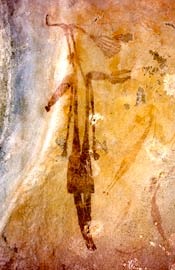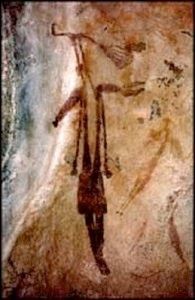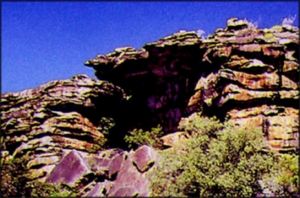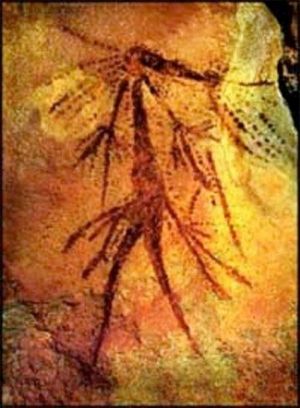User:Kbolman
| Website: | AHAA Foundation | ||||
| Employer: | AHAA Foundation | ||||
| Occupation: | Educator | ||||
| Nationality: | American | ||||
| Languages: | English | ||||
| Country: | USA (Hawaii) | ||||
| Skype address: | Katherine Bolman | ||||
| |||||
| |||||
Contents
Katherine Bolman, BS, MFA, MEd, MSW, D.Ed.Ph.D.
My Education
- The Fielding Graduate Institute Ph.D., Research Fellow in Creative Longevity and Wisdom, 2007.
- The Fielding Institute, Doctor of Education, Education and Psychology, 1998.
- Smith College School for Social Work, Masters of Social Work, 1983.
- University of Hawaii at Manoa, Masters of Education, 1980.
- University of Hawaii at Manoa, Masters of Fine Arts, 1978.
- University of Wisconsin at Madison, Bachelor of Science in Art, 1969
My Story
I found that art grows on one given enough time to enjoy it and puzzle about why people made things and added beauty to basic tools of life. In order to get here I have studied a lot about art. I got my first degree from the University of Wisconsin in ceramics. By the time I had completed that degree I was a professional potter and weaver. I set up the ceramic department for The Madison Art Center and started the Madison Potters Guild and studio.
My Masters in Fine Arts came from the University of Hawaii, as did my Masters in Art Education.
I changed careers and had a wonderful private practice in New York City after completing my MSW at Smith College School for Social Work in 1983. While living in New York, working in private practice and teaching for special groups at the Metropolitan Museum I started my doctorate at the Fielding Graduate Institute in Santa Barbara.
I completed my doctorate in Education and then received recognition as a Research Fellow in Creative Longevity and Wisdom from Fielding Graduate University in 2007. By that time I was 73. Obviously I believe in learning and teaching.
And what does all this have to do with now.
Going back a bit
I designed my master’s of Education thesis so that I could see a lot of Europe. My thesis research required that I teach in the great museums of Europe. I accomplished this by leading 15 students through Europe. We studied Art 101 in front of the actual pieces, standing on the Acropolis in Athens, Knossos, and Mycenae.
The trip started in Crete and moved on to Greece with its many museums. We took the night cruise to Brendisi and started our Italian journey at Pompeii where we experienced an Italian villa and its fabulous wall paintings. Seeing this in place instead as a partial painting on the wall of a museum was compelling.
We had time to explore Rome for three days before heading on to other great places in Italy, France, The Netherlands, Germany and Austria. My final degree was a doctorate in psychology and education from The Fielding Institute. The Fielding Institute 2007 recognized me as a Research Fellow in Creative Longevity and Wisdom.
So much has changed since then in the way information is presented to us. We have the Web/Internet to use. I started the Applied History of Art and Architecture Educational Foundation as a way to organize the huge collection of images.
These images are scattered about the web in a way that is difficult use. Many people have organized some of them in a variety of ways. This work is meant to be a course in the history of art as well as a place that teachers can send their students to study one bit of art or another.
- Each unit will be made up of a collection of micro-lessons. Each unit is designed to take you around the world in a certain period of time. We will visit each continent using time as our organizer. For example the first unit will cover Prehistoric Art around the world and the second unit will be Early Villages around the world and on to early Civilizations.
- Each unit will be made up of a collection of micro-lessons. Each unit is designed to take you around the world in a certain period of time. We will visit each continent using time as our organizer. For example the first unit will cover Prehistoric Art around the world and the second unit will be Early Villages around the world and on to early Civilizations.
- In order to provide a deeper understanding students will asked to make something that relates to the work they have just seen. We can start the student on their own site and add videos of them actually making the art.
- On your web page you can write about your ideas of life in the prehistoric world and add to your site as you go along. This can become a history of progress through the world of art, architecture and history.
- Create a digital journal of your own. Adults using this site as a resource can create a photo journal or collect postcards of the pieces that strike them as important, thus creating their own book.
The most important thing is to find joy in what you see and make. You are in charge.
-- Katherine Bolman, BS, MFA, MEd, MSW, D.Ed.
The Applied History of Art and Architecture Educational Foundation
I started the Applied History of Art and Architecture Educational Foundation and got the 501(c)3 status in 2002. The foundation received grants from the Atherton Foundation and the Cooke Foundation.
I returned to school in 2008 to learn to build this web site because I did not like the work done for me by other web designers.
At this point in time I would like to find kindred folk who would like to work with me to move the project more quickly and add their voices to the site. If you would like to be come an AHAA advisor please contact me.
Contact Info
- kbolmanahaa at gmail dot com
- (808) 941-4242
and we still except regular mail 1434 Punahou St. #93d1 Honolulu, HI ,96822
Introduction to Ancient Australia
I hope you start your walk about tour with the Bradshaw paintings. You might wonder why and just wait until you actually see the paintings. You have to be able to imagine your self living in wild craggy mountains where there are thousands of caves. We have the work done in some of the caves because of Mr. Bradshaw who discovered this cave. Dating of the work is difficult because the paintings have fused to the walls and appear to be like glass. This prevents DNA testing. So they are either 70,000 years or 50,000 years old give or take a few thousand years. The first paintings come from a cave which was made up of stone with amazing colors. This provided the artists with pigments that are unique. With this in mind these are the first paintings done by man that we know about. I hope you find them as amazing as I do.
This image comes from www.bradshawfoundation.com
Katherine Bolman, BS, MFA, MEd, MSW, EdD.,PhD
Paintings from the Kimberly mountains of Australia
It is in this cave high up in the Kimberly Mountains of Australia that the first true paintings of the world were made by a people that we know nothing about.
It is from this amazing cave that the first know painting created about 50,000 BCE
The story about these amazing paintings tells us about the passion of those who like to hike and poke into interesting places. James Bradshaw found this cave in 1891. These paintings were painted by Ice Age hunter-gather people.
So here we have this elegant group of interesting lines.

What is it?
Well, one of the things that is interesting is the way different parts of the world create a human being.
As we look closer, can you find the face? Ah, but where are the eyes and mouth?
Not there and yet I don’t doubt that this a human being. So see if you agree with my analysis of this figure. Start at the top and be amazed by his hat. Find the arms and that leads you to the throat and the arms. Continue to see the tassels at the end of what might be a scarf. Then there is the skirt and legs but no established feet.
Why no feet?
I don’t know.
And here is another way to draw the human figure. These folks are in motion.
What are they doing?
You can decide. I happen to see them as running but they could be dancing.
Now we look at the way the Bradshaw Paintings make heads and the human form.
What on earth do we have here?
I think we have a woman twirling and twirling. Starting at the head everything is in motion. Her braids, extra tassels on her ams, a skirt that is whirling and legs with out feet. Do you think you could drawing a person dancing? What do you need to do that? Paper and crayons might work. Can you get large paper so you can really get into her dance?
Ok this next person takes some stepping back from the image and seeing all the different parts of the image. Can you do that?
We can definitively have a discussion about this figure. So far we have not seen an exact face and at least I don’t see the head of this figure. I do think that the head is inside a mask and is part of a dance ritual.
What do you think?
There are some objects that are confusing and made perfect sense to the artists who painted this image.
Do you see a skirt? Where are the arms? What is on the end of that hand?
So far everyone seems to be having fun! Do these pictures tell you anything about this culture? As you think about an answer remember that these paintings on this cave are said to be done 50,000 years ago, give or take a few thousand years.
And what is this person doing?
Is he holding a bell in his or her hand and ringing it while dancing?
The legs are bent, the skirt is out from the dancers thighs. As we progress through these images think about what kind of society this was, 50,000 years ago in the cave in wild mountains.
How did they live, in caves, or did they develop some other cover that has long since ceased to exist?
We don’t know how long these people lived here. We don’t know what their life was like and we can imagine. Ask your teacher some of these questions"'
There are many more paintings from this part of Australia called the Kimberly Mountains. If you go to ahaafoundation.org and click on Australia under Prehistoric Art you will be amazed at what you will see. If you choose to do that you will be leaving this site.
My Reflection
I started this work because I feel that there should be a place for great courses. There is, to my mind, no reason that every teacher should create a new course from the beginning when the information can be found in one place on the internet. I am passionate about the idea of being able to create a course in the history of art and architecture around the world on line and free of charge. I chose the around the world approach because most history of art courses are Western Art.
It is my expectation that the course can be used in a number of ways. It is a stand alone course which anyone of any age can take with out an instructor. It is question based which in a way provides an instructor. It will have voice lectures on most pages in the near future. I want this to be a huge data base of art from around the world for people to use as part of their own research. I want history teachers to send their students to the site as part of the era of history they are teaching. I want literature teachers to send their students to see the art if the time that the novel is set in. I want people who go through one of the micro lessons to make something when they are finished. This could be a painting, a sculpture, or a short story using the images they have just learned about.I want the student to do something with the information. If this happens they are more likely to understand the culture. When I learn Garage Band because I want every micro lesson to have appropriate music of the time to be heard as they work. If this happens the student will recall what they have learned about art every time they hear the music. I the best of all possible worlds I want each student to have a simple flute and compose music with a music teacher to show the student how to put their composition on paper.
I want to work with a history teacher using the text they are using to integrate art into that one class as a pilot project.
And I need a lot of help, collaboration, and feed back to accomplish my dream.
Feedback & Notes from my WikiNeighbours
Hello Katherine I just put a link to your user page on the message you left for Phil. Please let me know how I can help --Nadia El Borai 10:01, 29 December 2009 (UTC)
(![]() : Katherine, I'm delighted how you've been able to master the wiki skills, and contribute to open education. Keep exploring and developing content - WE're here to help - and we'll do our best to facilitate connections and opportunities wherever possible! Happy Holidays! Randy Fisher 13:38, 18 December 2009 (UTC))
: Katherine, I'm delighted how you've been able to master the wiki skills, and contribute to open education. Keep exploring and developing content - WE're here to help - and we'll do our best to facilitate connections and opportunities wherever possible! Happy Holidays! Randy Fisher 13:38, 18 December 2009 (UTC))
Katherine, a question. Why I did not noticed music in your site? I think music of the time, hard to do for the more primitive periods, will be a wonderfull adittion. Or you have it but I didn´t noticed?
Best regards--Luis A. Ordóñez V. 02:01, 18 December 2009 (UTC)
(![]() : Katherine, can you add your photo to the personal information box on top? Thank you and congratulations on getting Level 2 and a neighbour box. I am sure you will soon go up the scale of wiki master rewards. --Nellie Deutsch 07:12, 17 December 2009 (UTC))
: Katherine, can you add your photo to the personal information box on top? Thank you and congratulations on getting Level 2 and a neighbour box. I am sure you will soon go up the scale of wiki master rewards. --Nellie Deutsch 07:12, 17 December 2009 (UTC))
(![]() : Katherine, this is an incredible start. --Nellie Deutsch 23:15, 13 December 2009 (UTC))
: Katherine, this is an incredible start. --Nellie Deutsch 23:15, 13 December 2009 (UTC))
 Hello Katherine, great job!! Please let me know if I can be of help. --Gladys Gahona C. 01:56, 15 December 2009 (UTC) I would love to have you help me. Lets talk about what you would enjoy doing.--Katherine Bolman 21:59, 15 December 2009 (UTC)
Hello Katherine, great job!! Please let me know if I can be of help. --Gladys Gahona C. 01:56, 15 December 2009 (UTC) I would love to have you help me. Lets talk about what you would enjoy doing.--Katherine Bolman 21:59, 15 December 2009 (UTC)
Hello Katherine, I have some content that might be useful for your art teaching on ikebana --Nadia El Borai 05:24, 15 December 2009 (UTC)
Thank you for your kind message. It does seem that we have a lot in common, especially with your daughter in Egypt as well. I studied pottery first during my school years and then at Saga University in Kyushu. I was also pregnant and bought the Japanese monpey "working trousers", took out the elastic band and replaced it with a ribbon to fit.
Art and science are very close and complement each other I think. I will be happy to help.--Nadia El Borai 10:14, 15 December 2009 (UTC)
Nadia, I think that the people in the sciences do not understand just how much a course in art history trains "the minds eye to see." Science presents us with so much visual imagery that one would think keeping art in the k-12 education level would be important. --Katherine Bolman 21:59, 15 December 2009 (UTC)
- (
 : Katherine, It will be my pleasure to be part of your team. I will try to help you as much as I can. Sanjay Kumar Pandagale 24 December 2009)
: Katherine, It will be my pleasure to be part of your team. I will try to help you as much as I can. Sanjay Kumar Pandagale 24 December 2009)
Welcome to eL4C33
- Hello and welcome to eL4C33, a free online Learning4Content wiki skills workshop.
- You may wish to check the Daily Instructions for the workshop, introduce yourself, and check the list of participants.
- Whenever you have the time, click on each of the above links and/or start ahead of time with the workshop.
- Your facilitators:
| EL4C33 | WiZiQ Meeting |

|
Live Event! December 15, 2009, 14:00 EST |
| Check your time | JOIN US |
| EL4C33 | WiZiQ Meeting |

|
Live Event! December 18, 2009, 00:00 EST |
| Check your time | JOIN US |











